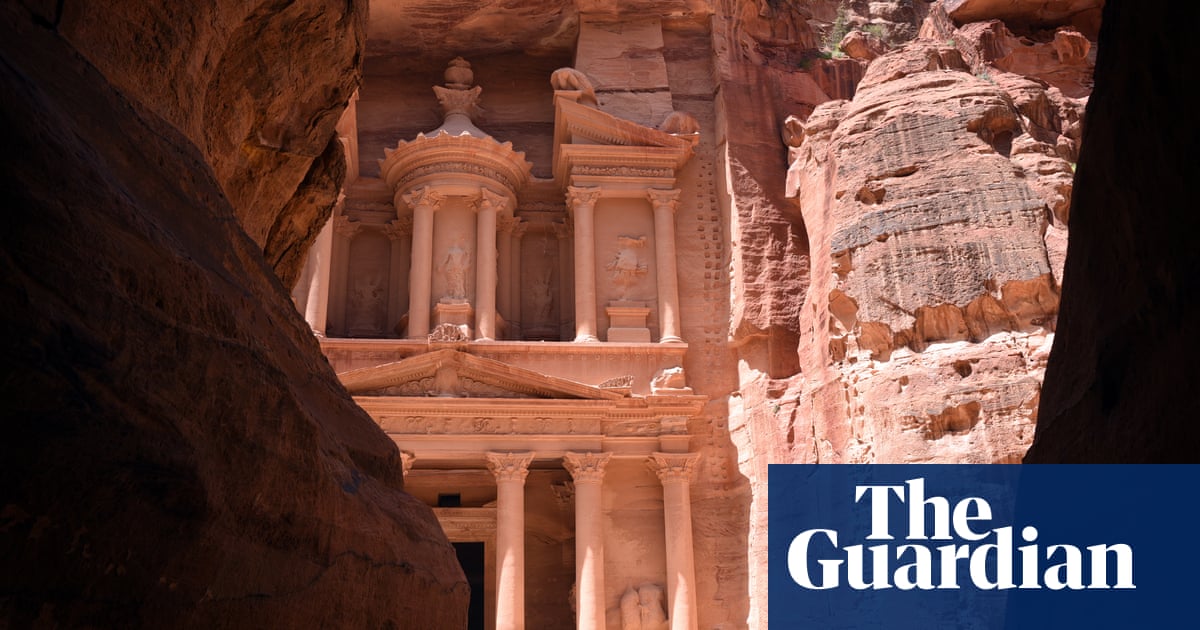For one of the most famous ancient sites on the planet, there is a surprising amount about the city of Petra – and the Nabataean people who built it – that we don’t know for sure.
What exactly were their origins? How did their society operate? And why did they hand-carve such spectacular monuments into the reddish rock of the Jordanian desert?
A recent find at Petra this week promised some “groundbreaking and historic” answers. Described by the team behind it as like finding the holy grail of Petra archaeology, a large tomb has been excavated immediately in front of the Khazneh, or treasury, the most celebrated of its magnificent facades. Inside were 12 bodies and a range of grave goods, reportedly made from bronze, iron and pottery.
“This is perhaps the most significant tomb ever found at Petra and a discovery of historic proportions,” said Josh Gates, the presenter of a Discovery Channel documentary that accompanied the US-Jordanian excavation. “The breakthrough could not only reveal the secrets of the treasury above, it could also offer an extraordinary glimpse into the lives of the early Nabataeans who built Petra.”
Breathless global headlines followed – boosted by a photograph of one find that, according to Gates, “looked nearly identical to the holy grail featured in Indiana Jones and the Last Crusade”, part of which was filmed outside the Khazneh.
That artefact was in fact the top of a broken jug, and experts in Nabataean burials have been cooler in their assessment of the tomb’s significance.
“I think it’s being a little hyped up in the media,” said Dr Lucy Wadeson, an expert on Nabataean funerary traditions who teaches at the University of Edinburgh. She said that while the location of the find inevitably added interest, “we already knew that this tomb existed. The [Jordanian] department of antiquities had already excavated two tombs there, and they left that one closed for a future date, so it’s not as if it’s something new.”
Megan Perry, a professor of biological anthropology at East Carolina University in the US and a leading expert on Nabataean burials, was more outspoken on X: “I’m not amazed @discovery @joshuagates – after all, I’ve excavated many tombs in Petra and guess what? THEY F’ING CONTAIN BURIALS! No one is amazed except people who haven’t done their research!”
The Nabataeans were an Arab tribe whose origins are still debated, but who rose to wealth and power in the centuries before the Christian era thanks to their position on the trading routes of valuable aromatics such as frankincense and myrrh from the Arabian peninsula to the Mediterranean. At the peak of the Nabataean civilisation, their power stretched from Damascus to northern Arabia. (Hegra, in present Saudi Arabia, where Wadeson is a research consultant, is another important Nabataean archaeological site.)
Wadeson said the classical-style architecture at Petra, the Nabataean capital, drew on these extensive cultural connections, but while they were certainly a literate culture, they left very few written records. “The Nabataeans didn’t really write about themselves. So our ancient textual sources about them are often in-passing comments from Greeks and Romans.”
Even tomb inscriptions are rare in Petra, she said, although some at Hegra have offered intriguing suggestions of a very different society to their contemporaries, in which women could own property and may have had real power.
“What is interesting is that we have tombs in Hegra that are specifically owned by women and were only for the burials of their daughters and granddaughters, on the matrilineal line of descent,” she said. “We don’t really know why – were these divorced women? Were they sacred courtesans in the temple?”
Coins, too, show Nabataean queens as well as kings, “so the queens obviously had quite a bit of power, and in some cases they ruled on behalf of their children”.
Wadeson’s own “holy grail” discovery would be to learn more of what the Nabataeans believed about the afterlife, she said. “They’re not a culture that have written down their own mythology or their own history. But maybe they did, and we just haven’t discovered that yet. Papyri, for example, might still remain. This kind of evidence could still be discovered.”

